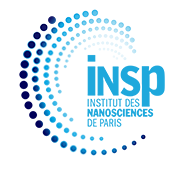Impact of the surface chemistry of 2D nanoplatelets on cation exchange
Résumé
Among nanocrystals, 2D zinc blende nanoplatelets (NPLs) provide the highest level of growth control, resulting in sub-monolayer roughness on their surface and hence on their thickness. This characteristic enables a uniquely narrow spectral linewidth. The synthesis of 2D particles is now well controlled with cadmium chalcogenides but the growth process remains difficult to extend to other materials. Therefore, an alternative strategy to achieve a roughness-free 2D object is to perform cation exchange on as-synthesized NPLs. Nevertheless, if not properly conducted, this strategy leads to dramatic shape reconstruction, resulting in the loss of beneficial properties. Here, we demonstrate that surface chemistry can significantly impact the kinetic and thermodynamic properties of the cation exchange procedure. When performing copper exchange on CdSe NPLs, we find that thiols are the most suitable ligands for shape preservation. This can be attributed to the ligand-induced lattice contraction on CdSe, which minimizes lattice distortion during cation exchange. Conversely, we determine that the initial flatness of the particle, ligand length, and ligand binding strength are not critical for maintaining the shape, although they impact the reaction duration. Finally, the method is generalized to multiple CdSe thicknesses and to CdS NPLs.
Domaines
Chimie| Origine | Fichiers produits par l'(les) auteur(s) |
|---|

